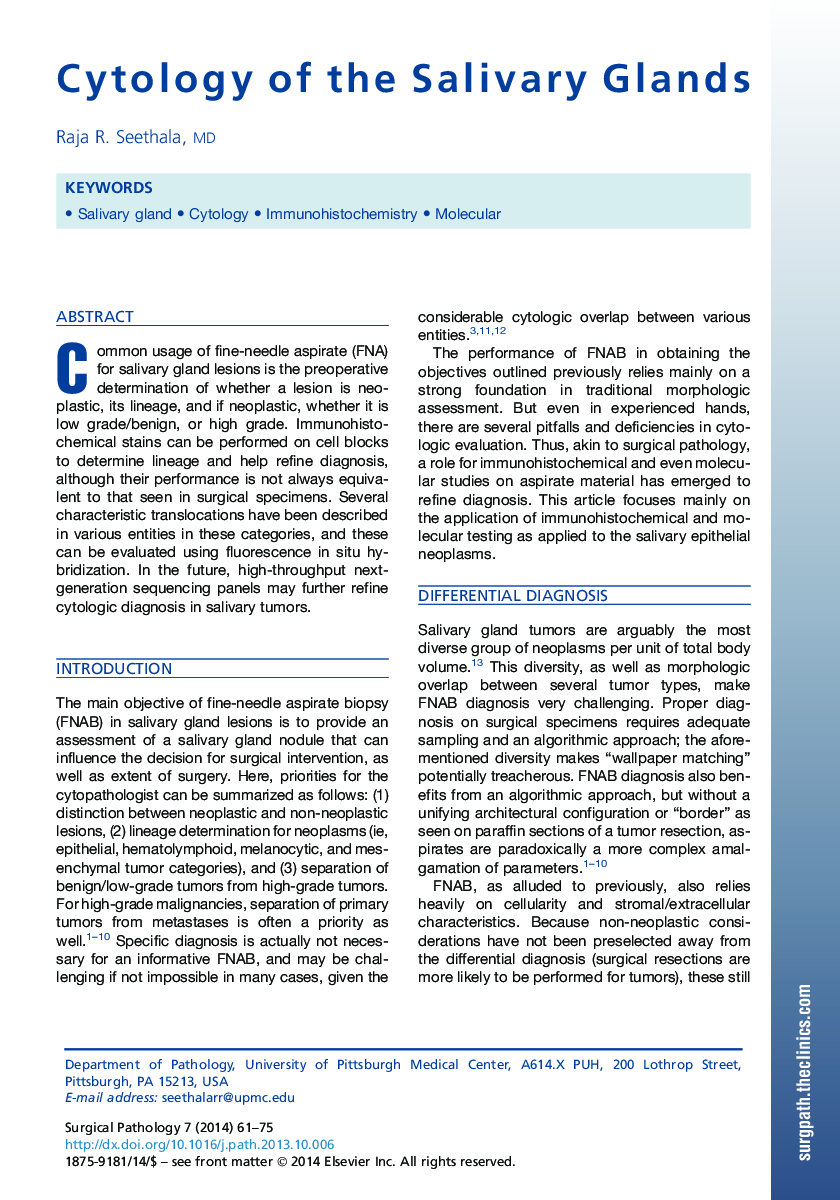| Article ID | Journal | Published Year | Pages | File Type |
|---|---|---|---|---|
| 3334568 | Surgical Pathology Clinics | 2014 | 15 Pages |
Abstract
Common usage of fine-needle aspirate (FNA) for salivary gland lesions is the preoperative determination of whether a lesion is neoplastic, its lineage, and if neoplastic, whether it is low grade/benign, or high grade. Immunohistochemical stains can be performed on cell blocks to determine lineage and help refine diagnosis, although their performance is not always equivalent to that seen in surgical specimens. Several characteristic translocations have been described in various entities in these categories, and these can be evaluated using fluorescence in situ hybridization. In the future, high-throughput next-generation sequencing panels may further refine cytologic diagnosis in salivary tumors.
Related Topics
Health Sciences
Medicine and Dentistry
Hematology
Authors
Raja R. MD,
